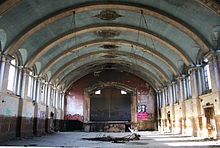
Friern Hospital was a psychiatric hospital in the parish of Friern Barnet close to a crossroads which had a hamlet known as Colney Hatch. In 1965, it became part of the London Borough of Barnet and in the early 21st century was converted to residential housing as Princess Park Manor and Friern Village. The hospital was built as the Second Middlesex County Asylum and was in operation from 1851 to 1993. After the County of London was created in 1889 it continued to serve much of Middlesex and of the newer county, London. During much of this time its smaller prototype Hanwell Asylum also operated.

Hellingly is a village, and can also refer to a civil parish, and to a district ward, in the Wealden District of East Sussex, England.
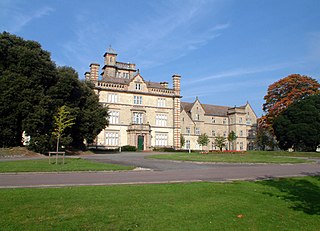
Fulbourn Hospital is a mental health facility located between the Cambridgeshire village of Fulbourn and the Cambridge city boundary at Cherry Hinton, about 5 miles (8 km) south-east of the city centre. It is managed by the Cambridgeshire and Peterborough NHS Foundation Trust. The Ida Darwin Hospital site is situated behind Fulbourn Hospital. It is run and managed by the same trust, with both hospitals sharing the same facilities and staff pool.

The Hellingly Hospital Railway was a light railway owned and operated by East Sussex County Council, used for transporting coal and passengers to Hellingly Hospital, a psychiatric hospital near Hailsham, from the London, Brighton and South Coast Railway's Cuckoo Line at Hellingly railway station.
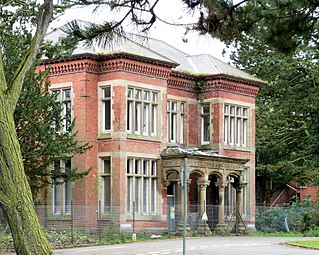
Whittingham Hospital was a psychiatric hospital in the parish of Whittingham, near Preston, Lancashire, England. The hospital opened in 1873 as the Fourth Lancashire County Asylum and grew to be the largest mental hospital in Britain, and pioneered the use of electroencephalograms (EEGs). It closed in 1995.

The Park Centre for Mental Health is a heritage-listed psychiatric hospital at 60 Grindle Road, Wacol, City of Brisbane, Queensland, Australia. It is one of the largest psychiatric hospitals in Australia. The hospital provides a range of mental health services, including extended inpatient care, mental health research, education and a high security psychiatric unit. It was designed by Kersey Cannan and built from 1866 to 1923. It is also known as Goodna Hospital for the Insane, Goodna Mental Hospital, Woogaroo Lunatic Asylum, and Wolston Park Hospital Complex. It was added to the Queensland Heritage Register on 21 October 1992.

Central State Hospital, originally known as the Central Lunatic Asylum, is a psychiatric hospital in Petersburg, Virginia, United States. It was the first institution in the country for "colored persons of unsound mind".

Kingsley Green is a mental health and learning disability site located in Hertfordshire, England, just southeast of the village of London Colney.

Netherne Hospital, formerly The Surrey County Asylum at Netherne or Netherne Asylum was a psychiatric hospital in Hooley, Surrey in the United Kingdom.

Graylingwell Hospital was a psychiatric hospital in Chichester, West Sussex, United Kingdom.

Swanbourne Hospital is a heritage listed former mental hospital located in Mount Claremont, Western Australia. Built in 1904, it was the largest stand-alone psychiatric hospital in Western Australia for much of the twentieth century until its closure in September 1972. The hospital was originally known as Claremont Hospital for the Insane, Claremont Mental Hospital and Claremont Hospital. Following the closure of Claremont Hospital in 1972, the original 1904 section of the hospital functioned as the Swanbourne Hospital until 1985. The site was vacant from 1986, until renovated and reopened primarily as an aged care residence in 2018.
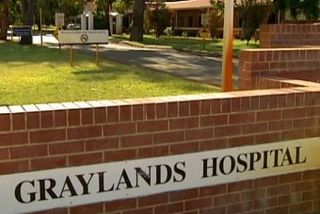
Graylands Hospital is Western Australia's largest mental health inpatient facility, and the only public stand-alone psychiatric teaching hospital. It is located on a 10-hectare (25-acre) site in Mount Claremont, in a suburb formerly known as Graylands, after which the hospital was named. The hospital has 178 beds, including 30 beds in the Frankland Centre, and 320 nurses on staff.

St Edward's Hospital was a mental health facility at Cheddleton in Staffordshire, England. The hospital closed in 2002 and was converted into apartments and houses.

The Old Manor Hospital was a psychiatric hospital in Salisbury, Wiltshire, England. It was established in the early 19th century as a private licensed house called Fisherton House or Fisherton House Asylum, which became the largest private madhouse in the United Kingdom. In 1924, following a change of proprietors, it was renamed Old Manor Hospital and in 1955 it was amalgamated into the National Health Service. From 1813 to 1955 it was owned and managed by members of the same family. The Old Manor Hospital closed in 2003 and was replaced by Fountain Way, a smaller, modern, psychiatric hospital on part of the same site. In 2014 the site was acquired by Quantum Group for development as a residential estate and the conversion of the main building to a hotel.

Baillie Henderson Hospital is a heritage-listed rehabilitation and mental health facility in Toowoomba, Queensland, Australia. Baillie Henderson Hospital is a public facility, owned and operated by Darling Downs Health, part of Queensland Health. It was built from 1888 to 1919, and was historically called the Toowoomba Hospital for the Insane, Toowoomba Lunatic Asylum, and Toowoomba Mental Hospital. It was added to the Queensland Heritage Register on 27 September 1999.
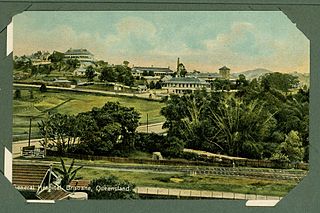
Brisbane General Hospital Precinct is a heritage-listed hospital precinct at 40 Bowen Bridge Road, Herston, City of Brisbane, Queensland, Australia. It was built from 1875 to 1941. It includes six historic buildings associated with the Royal Brisbane and Women's Hospital and the former Royal Children's Hospital, as well as aspects of their grounds and landscaping. It was added to the Queensland Heritage Register on 28 March 2003. A number of buildings in the precinct, in particular the Lady Lamington Nurses Home, will be redeveloped as part of the Herston Quarter development.
Glenside Hospital, as it was known from 1967, previously the Public Colonial Lunatic Asylum of South Australia, Parkside Lunatic Asylum and Parkside Mental Hospital, was a complex of buildings used as a psychiatric hospital in Glenside, South Australia.
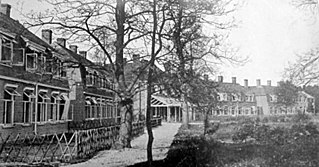
The Pinewood Hospital was a hospital in Pinewood, near Crowthorne, England, for the treatment of people suffering from tuberculosis. It was located in a pine wood as pine trees were thought to be beneficial in the treatment of the disease. It opened as the London Open Air Sanatorium in 1901 before becoming the Pinewood Sanatorium. It treated casualties of the First and Second World Wars and after the second, began to treat general thoracic patients as tuberculosis became less prevalent. It closed in 1966.

Bellsdyke Hospital, also known as Stirling District Lunatic Asylum ('SDLA') or Stirling District Asylum, is a former psychiatric hospital at Larbert, Falkirk that was opened in June 1869 and largely closed in 1997. It was an asylum set up by the Stirling District Lunacy Board.

Lidcombe Hospital Precinct is a heritage-listed former hospital and home for the aged, now converted to private housing, located at Joseph Street, Lidcombe, Cumberland Council, New South Wales, Australia. It was designed by James Barnet, Walter Liberty Vernon, Cobden Parkes and Ken Woolley and built from 1885 by the Government of New South Wales. It is also known as Rookwood Asylum for the Aged and Infirm; Rookwood State Hospital and Asylum for Men; Lidcombe State Hospital & Home; Rookwood Boys Reformatory & Model Farm. The property is now owned by Australand Industrial No. 18 Pty Limited and the Sydney Olympic Park Authority. It was added to the New South Wales State Heritage Register on 24 February 2006.



